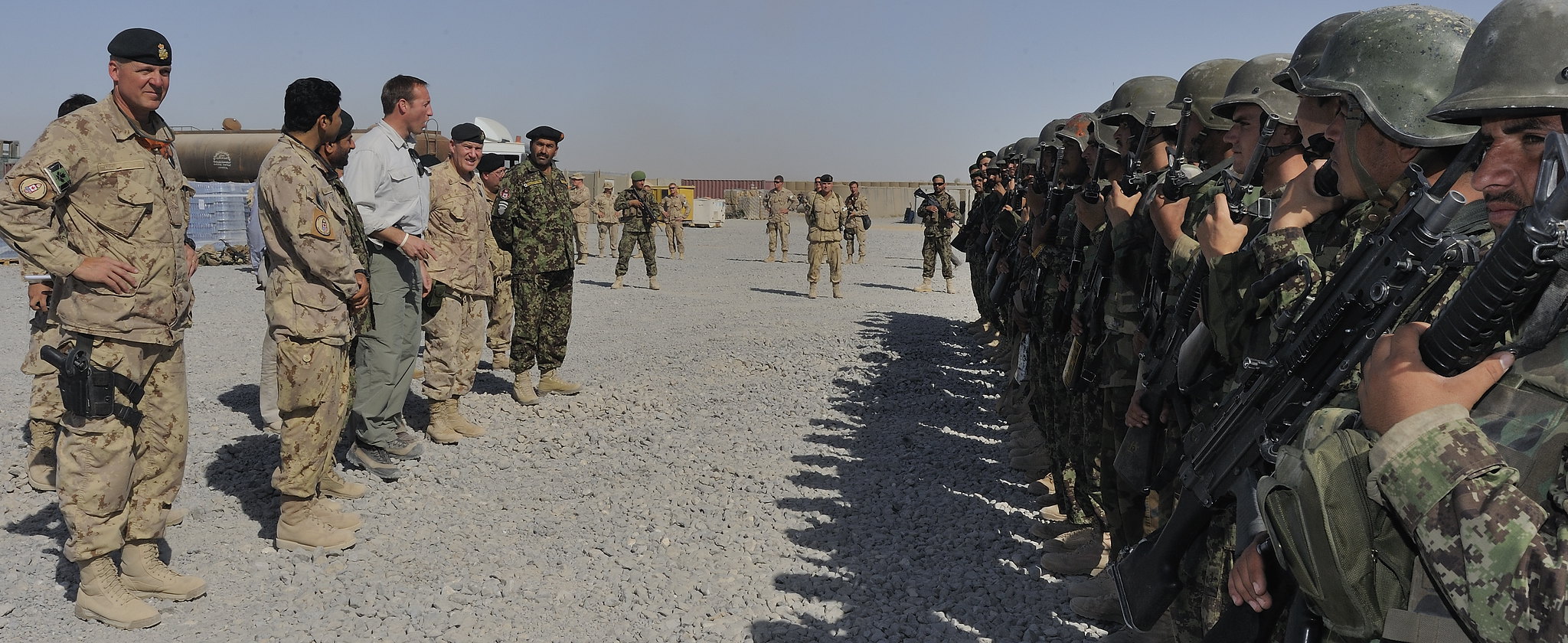
The United States’ initial decision to invade Afghanistan came after the 9/11 attacks in 2001, where members of terrorist group Al Qaeda hijacked four American planes and used them to attack landmarks in Washington D.C. and New York. Afghanistan was ruled by the Taliban regime, who provided a safe haven to the Al Qaeda leadership based in the country.
The initial objective of the invasion was to remove the Taliban from power, while also reducing the power of the allied terrorist group Al Qaeda. The United States aimed primarily to capture or kill Al Qaeda’s leader, Osama bin Laden, the mastermind of the 9/11 attacks. But soon after the arrival of boots on the ground, the mission expanded to the broader goal of nation-building.
Over 19 years later, the United States is still at war in Afghanistan. Though Canada pulled out of Afghanistan in 2014, the country’s thirteen-year tenure did not heed the results desired, and many believe that it remained involved in Afghanistan for far too long. In addition, the allied coalition ultimately failed at both eliminating either group and stabilizing the country.
Why Canada Joined
Canada’s involvement in Afghanistan began in October 2001, when then-Prime Minister Jean Chrétien pledged Canada’s “complete support” to the United States. The purpose of Canada’s involvement was initially aimed at curbing international terrorism efforts. In addition, as Canada had declined to participate alongside the Americans during the Iraq War, pledging continued support for the effort in Afghanistan was perhaps a tactic used by Chrétien to realign Canada towards U.S. interests.
Canadian soldiers joined American and British troops in fighting to topple the Taliban regime, eliminate terrorist operations, and establish the basis for lasting peace in the troubled country. Then in 2006, upon signing onto the Afghanistan Compact international framework and redeploying troops to the Kandahar province, Canada curbed its initial plans to withdraw troops in the same year.
In total, 40,000 Canadians served as part of the NATO mission from 2001 to 2014, with a total of 158 Armed Forces members dying in the war, in addition to the thousands of Afghan civilians who also lost their lives.
Public support for the war, which was high at the beginning of the conflict, began to wane around the fall of 2006, as Canadian casualties mounted in Kandahar during the Taliban resurgence between 2006 and 2009.
Mission Creep and False Positives
Records point to many mistakes made by both the Bush and Obama administrations, showing that the war lacked a clear strategy. Following a tenuous three-year legal battle, the Washington Post recently won access to the Afghanistan Papers under the Freedom of Information Act. The Papers are comprised of an internal Pentagon report, spanning over 2,000 pages in length, that attempts to reach a verdict on the war in Afghanistan.
Discovered in the Afghanistan Papers was that while the Americans were telling the public that progress was being made in Afghanistan and that the war was worth fighting, tactical victories had little to no effect overall. Fighting against insurgent forces using guerilla-style warfare meant that everytime forces were defeated in battle, they retreated, regrouped, and returned in larger numbers.
Though the Papers focus on the U.S. government’s mishandling of the war effort in Afghanistan – how the war lacked clear direction, was misguided, and how billions of aid dollars were mishandled – the findings should trouble every country involved.
With the inevitability of victory becoming evident, the goal shifted from fighting extremist terrorist groups to stabilizing the government in Kabul and also promoting women’s rights and fostering democracy. And with the inherent mission creep of the operation in Afghanistan, it became difficult to sense when an appropriate time to withdraw would be.
Lessons Learned?
In March 2014, the Kabul mission closed and Canada’s 13-year military role in Afghanistan came to an end. Soon, Canada’s efforts transitioned to a mission aimed at continuing to train the Afghan National Army.
Today, Canada’s combat mission is complete, and the broader focus of NATO is on training Afghan forces and assisting with development projects. Afghanistan’s imposed democracy remains highly fragile, and concerted efforts by both Canada and the United States remain in an attempt to strengthen it.
Though Canada’s involvement in Afghanistan ended approximately six years ago, there has been no formal or complete accounting of the war by the federal government or parliamentary watchdogs, making it difficult to draw any concrete conclusions about the success, or lack thereof, of the effort in Afghanistan.
Edited by Lewie Haar.
The opinions expressed in this article are solely those of the author and they do not reflect the position of the McGill Journal of Political Studies or the Political Science Students’ Association.
Image by Canada in Afghanistan via Flickr Creative Commons